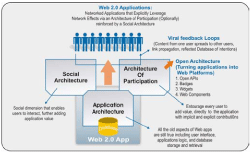|
|
|
JBoss Seam
|
|

Exploring the Strengths of Seam
1. The first application framework for
EJB 3.0
EJB 3.0 has totally changed the notion of
EJB components as coarse-grained, heavyweight
objects to EJBs as lightweight POJOs
with fine-grained annotations. Seam eliminates
the distinction between the presentation tier
components and the business logic components
and brings a uniform component model to the
EE platform where any class may be an EJB.
Seam is providing a backward compatibility with
JEE i.e. it is not limited to Java EE 5.0 servers
that support EJB 3.0. Seam may be used in
any JEE environment, or even in plain Tomcat.
2. Integrate and Enhance Java EE
Frameworks
The core frameworks included in Java EE 5.0
are JSF 1.2 and EJB3.0. EJB 3.0 is nothing but
the light weight middle tier framework based
on POJO (Plain Old Java Objects). It is used for
data persistence and business services. JSF is
the component framework based on MVC
architecture meant for web applications
development. Most of the web applications
based on Java EE 5.0 do not have both EJB3
and JSF modules for business logic and front
end respectively. EJB3 configures services by
using annotations while JSF uses XML files.
Furthermore at the framework level EJB 3.0
and JSF components are not aware of each
other. Artificial facade objects enable the EJB 3
and JSF components to work together by tying |
|
up the business components to web pages and
boilerplate code so that the method calls can
be made across the framework boundaries.
Seam is responsible for gluing these
technologies together.
Seam breaks the artificial layer between EJB3
and JSF and also integrates EJB3 and JSF by
using consistent and annotation-based
approach. Seam lets the developer to use the
“same kind of stuff”, annotated POJOs for all
the components of any application. Seam
applications are quite simple and includes less
significant code (for both Java as well as XML
code) while having the same functionality.
3. Web 2.0 Ready
Seam is mainly designed for the web
applications of the Web 2.0 style. Seam
supports AJAX (Asynchronous JavaScript and
XML) in various ways such that the Seam
components can directly access the custom
JavaScript library from the browser like a
JavaScript object. Seam supports an advanced
concurrency model that internally manages
multiple AJAX requests of a single user.

AJAX applications simplifies the frequent
requests to the server as compared to non-
AJAX applications. However the frequent
requests make it challenging to handle the
increase in database load. The database can
not handle the load if the database serves all
the request. To combat this challenging job
Seam provides an in-memory cache, which
provides a stateful persistence context. This
in-memory cache is capable to hold the
information throughout the session and hence, |
|
Oct 2007 | Java Jazz Up | 27 |
| |
|
| |
Pages:
1,
2,
3,
4,
5,
6,
7,
8,
9,
10,
11,
12,
13,
14,
15,
16,
17,
18,
19,
20,
21,
22,
23,
24,
25,
26,
27,
28,
29,
30,
31,
32,
33,
34,
35,
36,
37,
38,
39,
40,
41,
42,
43,
44,
45,
46,
47,
48,
49,
50,
51,
52,
53 ,
54,
55,
56,
57,
58,
59,
60,
61,
62,
63 ,
64,
65 ,
66 ,
67 ,
68 ,
69 ,
70,
71,
72,
73,
74,
75,
76,
77,
78,
Download PDF |
|
|
|
|
|
|
| |
| |
|